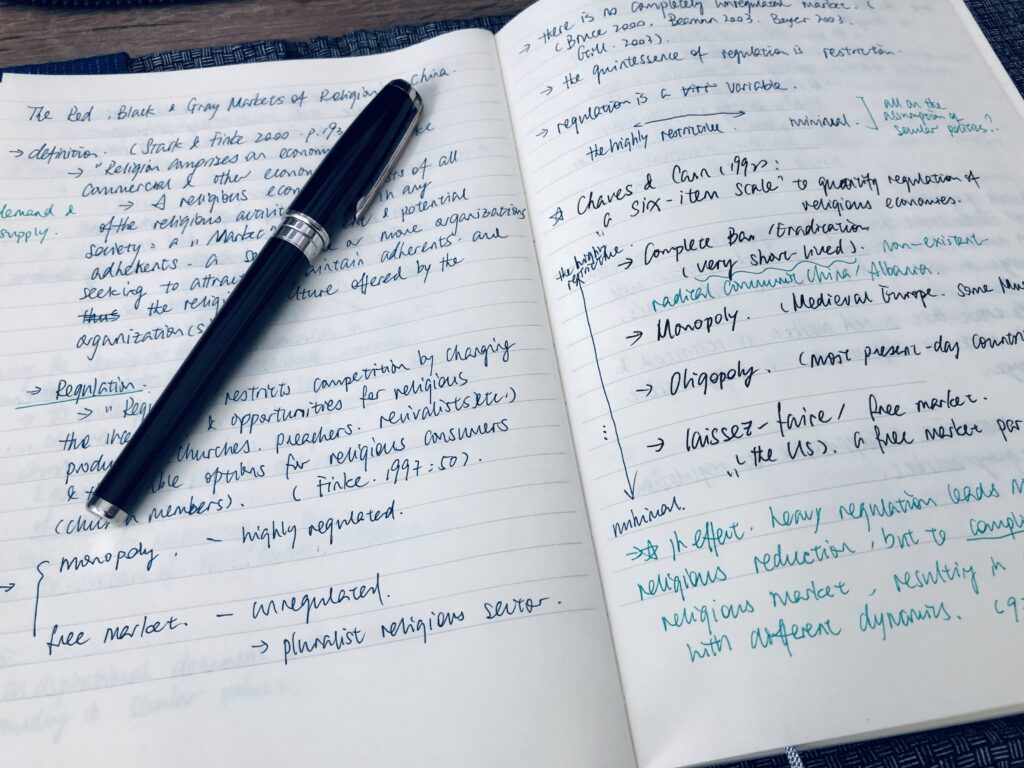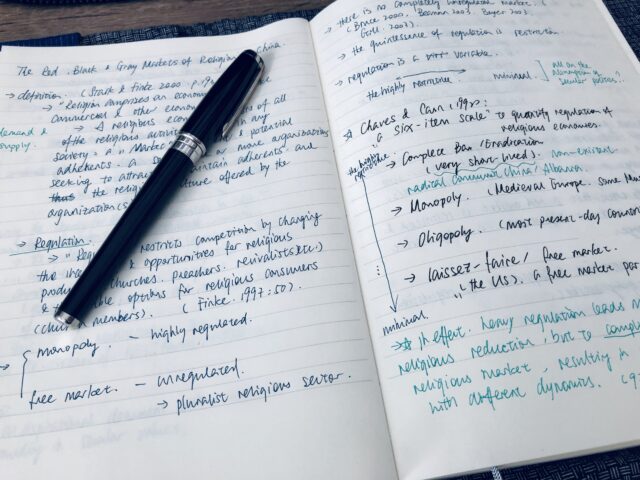
I have come across an interesting work about the religious markets in China by Fenggang Yang, and I wish to share with you my excitement with this discovery of a new perspective, namely, the religious economy. Religious economy states that religion can be seen as a market, one like all the others, with suppliers offering and consumers demanding products and services. Therefore, like any other market, the religious market is also subjected to governmental regulation. By assessing different levels of regulation, scholars, particularly Chaves and Cann, have distinguished ways a religious market in a given society organizes and operates. For instance, Medieval Europe is like a monopoly religious market, for one religious supplier dominated the entire market share; correspondingly, religious affairs were highly regulated and organized. Contemporary countries like Saudi Arabia and Iran, arguably also fall into this category. On the other end of the spectrum is a laissez-faire market, like the contemporary U.S. Still, the model is only an estimation of real societies because realistically, there exists neither society where religion is completely unregulated nor one where religion is completely eradicated. Building on this scale, Yang proposes a tripartite religious market model of China: the three markets are the red, black, and gray market. The red market is the completely legal and open market, dominated by the five officially recognized religious institutions, correlated to five religions (China’s religious economy is, arguably, an oligopoly, the most common model among present-day countries). The black market consists of, naturally, the completely illegal religious suppliers, consumers, and activities. The gray market is roughly divided into two categories, one consists of ambiguous religious activities within the legal five religious tenets, the other consists of markets that can be seen as religious but rather registered under labels, such as custom, tradition, health, sports, etc.
Yang’s model provokes various points for question and reflection that I wish to address in my research: 1. The fundamental factor that divides the red, black, and gray markets are law, civil or religious. Therefore, the three markets, at least the open and the black ones will always exist in any given society because there is no unregulated market and because of the power of existing religious authorities (think of heresies). Aside from the level of individual risk in participating in the black market, is a laissez-faire model necessarily better than a monopoly or oligopoly? If so, what is the moral appeal? 2. What does the economic perspective reveal the workings of religious freedom? It has shown in the U.S. case that a free market does not necessarily guarantee a higher level of religious freedom; rather, intense competition only makes bigger and more powerful religious organizations prevail over smaller religious organizations and new religious movements, and the legal system also promotes orthodoxy rather than diversity of religious opinions. Rather, regulation brings more incentives for gray market growth and results in a higher level of religious creativity. Again, what is the appeal of religious freedom, what does it really mean and how is it different from our intuitive sense of freedom?
There is much more to discuss, I look forward to engaging with my fellow researchers during the coming conference!
